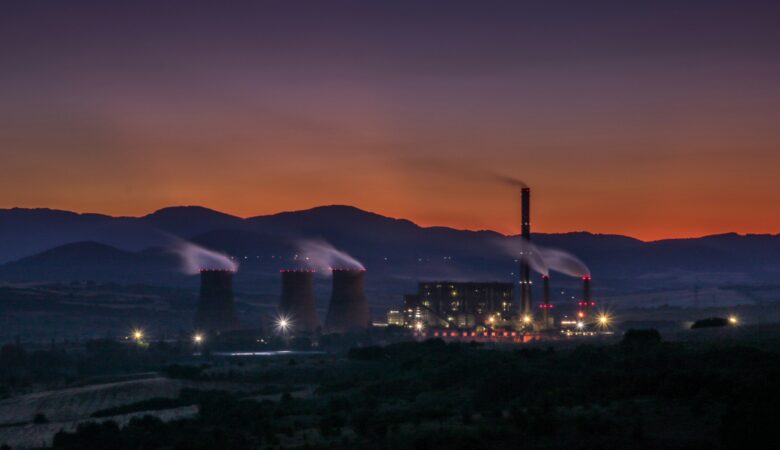As the global transition toward renewable energy intensifies, the need for advanced energy storage solutions has become more critical than ever. Traditional battery technology, though essential, is only one piece of the puzzle in ensuring a stable and reliable energy supply. The future of energy storage lies beyond conventional batteries, encompassing a variety of innovative technologies that promise to revolutionize how we store and utilize energy. In this context, Rhinobay Energy is emerging as a leader in exploring and implementing these next-generation storage solutions, which are crucial for stabilizing energy grids and ensuring consistent power supply, especially from intermittent renewable sources like solar and wind.
The Need for Advanced Energy Storage
Renewable energy sources such as solar and wind are inherently variable, generating electricity only when the sun shines or the wind blows. This variability poses significant challenges for grid stability and energy reliability, particularly in regions with less developed energy infrastructure. To overcome these challenges, advanced energy storage technologies are required to store excess energy generated during periods of high production and release it during times of low output.
Rhinobay Energy recognizes the importance of these technologies in ensuring a sustainable energy future for Nigeria and West Africa. By investing in research, development, and deployment of advanced storage solutions, Rhinobay Energy is helping to pave the way for a more resilient and reliable energy system.
Emerging Energy Storage Technologies
1. Hydrogen Storage
Hydrogen is quickly gaining recognition as a promising energy storage medium. The process involves using excess renewable energy to produce hydrogen through electrolysis, where water is split into hydrogen and oxygen. The hydrogen can then be stored and later converted back into electricity using fuel cells or burned to generate heat. This method offers a scalable solution for long-term energy storage, capable of storing large amounts of energy for extended periods. Rhinobay Energy is actively exploring hydrogen storage technologies as part of its commitment to advancing sustainable energy solutions. By integrating hydrogen storage into its energy portfolio, Rhinobay Energy aims to provide reliable energy storage options that can bridge the gap between supply and demand, particularly during seasonal fluctuations in renewable energy production.
2. Thermal Energy Storage
Thermal energy storage (TES) is another promising technology that involves storing heat energy for later use. TES systems can store heat generated by concentrated solar power (CSP) plants, industrial processes, or even excess electricity from the grid. This stored heat can be converted back into electricity when needed or used directly for heating purposes. TES is particularly effective in regions with abundant solar resources, such as Nigeria, where it can enhance the efficiency and reliability of solar energy systems. Rhinobay Energy is investigating TES as a means to optimize the performance of its solar energy projects and provide continuous power even when the sun is not shining.
3. Pumped Hydro Storage
Pumped hydro storage is one of the oldest and most widely used large-scale energy storage technologies. It works by pumping water to a higher elevation during periods of low energy demand and then releasing it to generate electricity when demand is high. This method is highly efficient and capable of storing vast amounts of energy. Rhinobay Energy is considering the development of pumped hydro storage facilities in regions of Nigeria with suitable topography. By integrating pumped hydro storage with renewable energy sources, Rhinobay Energy can help balance the grid and provide a reliable supply of electricity even during peak demand periods.
4. Compressed Air Energy Storage (CAES)
Compressed air energy storage (CAES) systems store energy by compressing air in underground caverns or tanks. When energy is needed, the compressed air is released, driving turbines to generate electricity. CAES is particularly well-suited for large-scale energy storage and can complement renewable energy sources by providing a reliable backup power supply. Rhinobay Energy is exploring the feasibility of CAES in Nigeria, where it could play a crucial role in stabilizing the national grid and ensuring a continuous supply of electricity, particularly in areas with frequent power outages.
Rhinobay Energy’s Role in Advancing Energy Storage Solutions
Rhinobay Energy is at the forefront of exploring and implementing these advanced energy storage technologies. By focusing on research and development, as well as strategic partnerships, Rhinobay Energy is positioning itself as a leader in the future of energy storage in Nigeria and across West Africa.
1. Research and Development
Rhinobay Energy is deeply committed to research and development, continuously exploring new and innovative energy storage technologies that can be adapted to the unique challenges of the African energy market. The company is particularly focused on developing storage solutions that are not only technologically advanced but also cost-effective and scalable, ensuring they can be deployed across a wide range of applications and regions.
2. Pilot Projects
To test and refine these emerging technologies, Rhinobay Energy is launching pilot projects in key locations across Nigeria. These projects are designed to demonstrate the viability of advanced energy storage systems in real-world conditions, providing valuable data and insights that will inform future deployments. By testing these technologies in the field, Rhinobay Energy can ensure they are fully optimized for the specific needs and conditions of the Nigerian energy market.
3. Collaboration and Partnerships
Recognizing the importance of collaboration, Rhinobay Energy is actively forming strategic partnerships with global leaders in energy storage, research institutions, and technology providers. These partnerships are critical for accelerating the development and commercialization of new storage solutions, allowing Rhinobay Energy to bring the latest innovations to the Nigerian market. By working closely with these partners, Rhinobay Energy is helping to create a more sustainable and resilient energy future for Nigeria and West Africa.
Conclusion
The future of energy storage is poised to go far beyond traditional batteries, with innovative solutions like hydrogen storage, thermal energy storage, pumped hydro storage, and compressed air energy storage leading the way. These technologies offer the potential to revolutionize how we store and utilize energy, providing reliable and sustainable solutions for the challenges posed by renewable energy’s inherent variability. Rhinobay Energy is at the forefront of this transformation, driving the development and deployment of advanced energy storage solutions that will play a critical role in shaping the future of energy in Nigeria and beyond. Through its commitment to innovation, research, and strategic partnerships, Rhinobay Energy is advancing the energy storage sector and contributing to a more sustainable and resilient energy future for all.















Leave a Reply